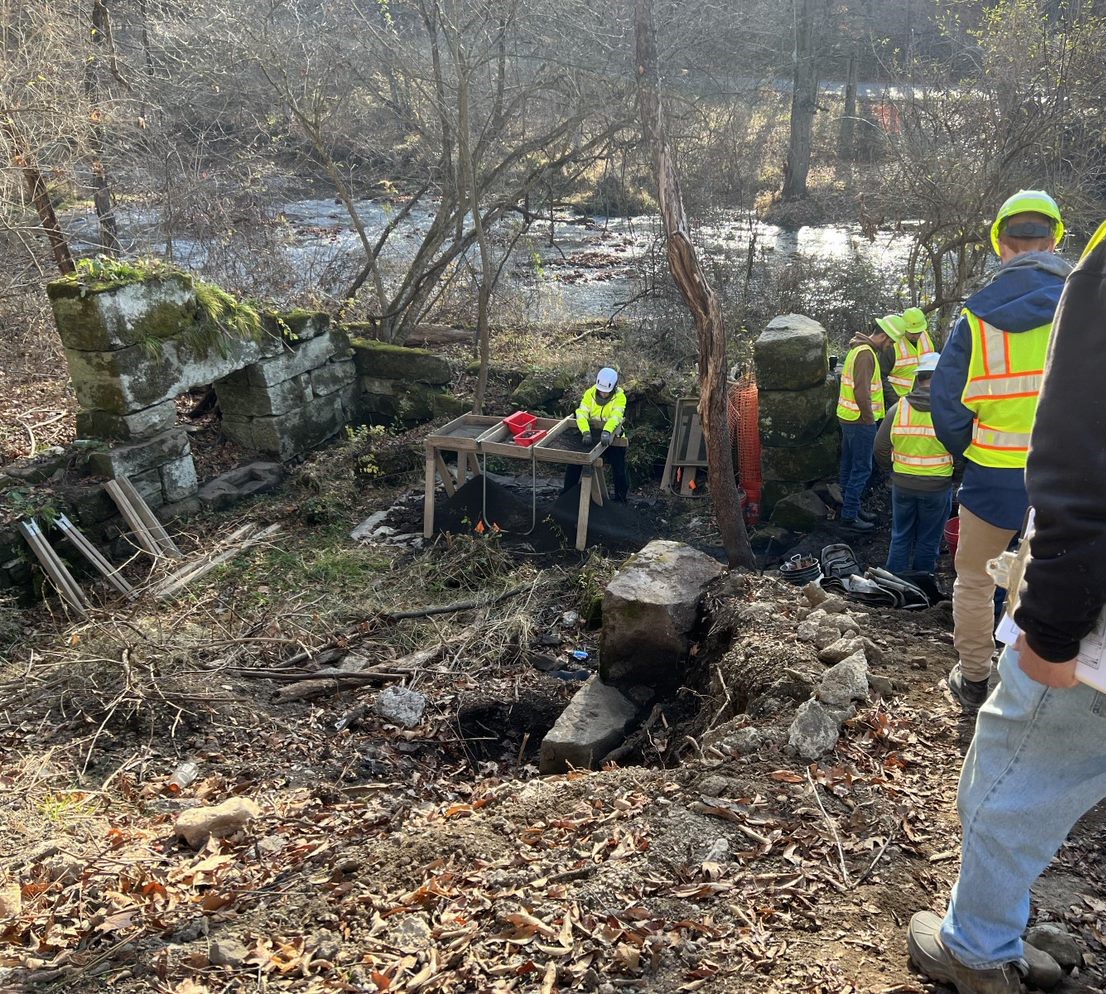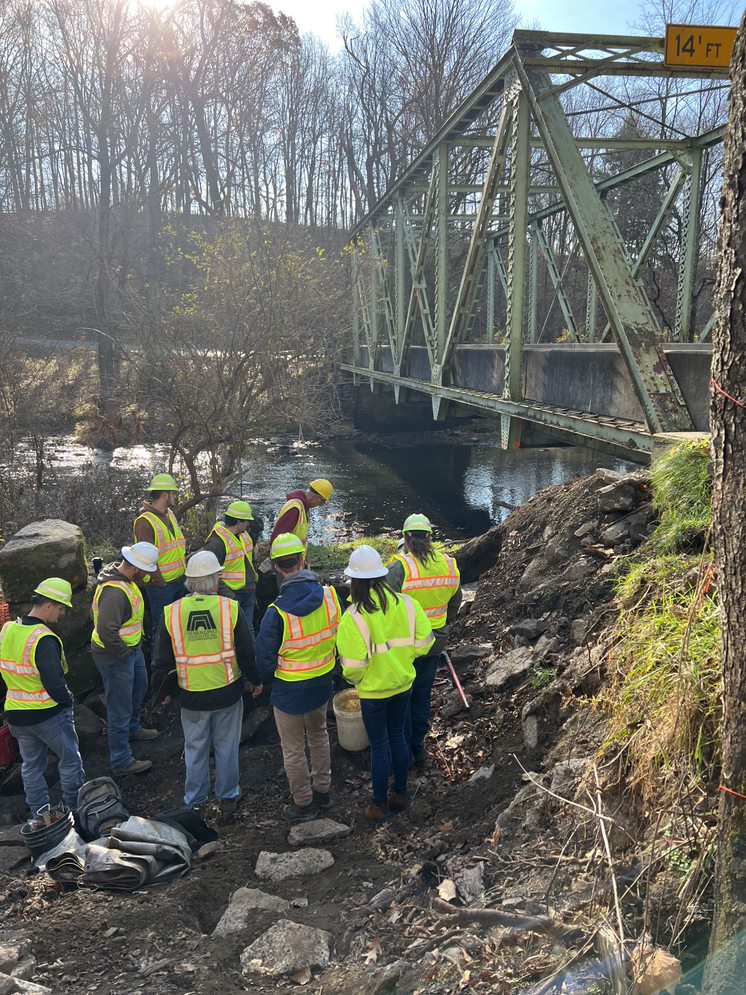The average person probably doesn't think about how a bridge rehabilitation project could have adverse effects on a historical site, but this is something PennDOT must consider during the planning stages of every project.
Before the start of a project, PennDOT environmental staff review and inspect the project site and area of potential effects (APE) for possible impacts to wetlands and streams, water quality, air and noise quality, cultural and historical resources, and more.
Working within the environmental unit, cultural resource professionals review each project for potential impacts to historic and prehistoric archaeological remains and above ground resources such as buildings, structures, and historic sites and landscapes.
"Historic" resources include artifacts, prehistoric and historic sites and properties, structures, objects, and landscapes. To be considered eligible for the National Registry of Historic Places (NRHP), a resource must possess at least one of the following criteria: association with events that have made a significant contribution to the broad patterns of our history; association with the lives of persons significant in our past; distinctive characteristics of a type or period of architecture, method of construction, the work of a master architect, high artistic value, or representative of a significant and distinguishable entity whose components may lack individual distinction; or potential to yield or have yielded information important in prehistory or history, according to Section 106 of the National Historic Preservation Act.
PennDOT cultural resource professionals determine the presence or absence of significant resources through literature search and field work. First, a work site is inspected for known, recorded, and potential unrecorded historic resources.
If a presence of cultural resources exists, the next step is to evaluate its significance and eligibility for listing on the NRHP. If the cultural or historic resources cannot be avoided throughout the duration of work, adverse effects are minimized and mitigated by recovering data through an archaeological survey.
An example of this process in action is Mercer Road Bridge over Neshannock Creek. It is owned by Mercer County and was built in 1922. Because the bridge is in poor condition, the county began the process to replace it.
During preliminary work for the project last spring, PennDOT's District 1 cultural resources staff identified remains of a stone foundation. The foundation sits in the northwest quadrant of the APE.
Additional research indicates the stone remains belong to a former 19th century gristmill built in 1805 by John and Joseph Junkin. The gristmill also included a dam, earthen headrace for waterpower, a lumber mill, and a carding mill. This milling complex was known as Hope Mills. In 1886, the grist mill and bridge were lost to fire.
Experts took samples of soils out of the APE. Some samples dated about 20,000 years old. The soil was sorted through screens to remove rocks, sticks, and other materials. No significant artifacts from the gristmill were found.
PennDOT cultural resource experts and Heberling Associates concluded this site is likely eligible for listing in the NRHP due to its strong potential to yield significant new information about 19th century water-powered milling in northwestern Pennsylvania.
The archaeological investigation was completed in November, and construction of a new bridge is tentatively scheduled for 2025.